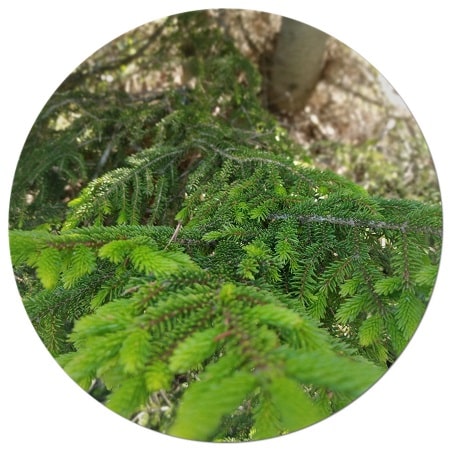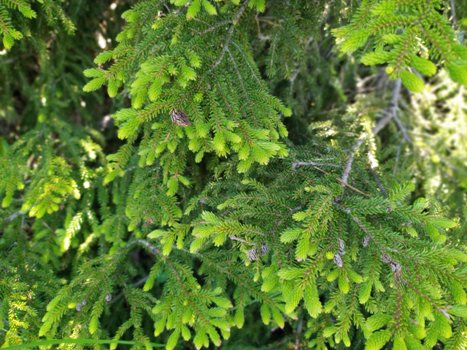Spruce trees (Picea species) are widely distributed throughout Europe. They are adaptable and can grow in various climates and soil conditions. Here are some regions where spruce trees are found in Europe:
- Scandinavian Peninsula: Spruce trees are abundant in the northern parts of Norway, Sweden, and Finland. The vast boreal forests of these countries consist of a significant number of spruce trees.
- Central Europe: Spruce trees are prevalent in Central European countries such as Germany, Austria, Switzerland, and the Czech Republic. They can be found in mountainous regions like the Bavarian Forest, the Black Forest, the Alps, and the Carpathian Mountains.
- Baltic States: Estonia, Latvia, and Lithuania have extensive spruce forests. Spruce is one of the dominant tree species in the Baltic region and is important for the timber industry.
- Russia: Spruce trees are widespread in Russia, particularly in the boreal forests of Siberia. Siberian spruce (Picea obovata) is a native species in this region.
- Poland: Spruce trees are common in Poland, particularly in the mountainous areas of the Sudetes and the Tatra Mountains.
- Balkan Peninsula: Spruce trees can be found in countries such as Slovenia, Croatia, Bosnia and Herzegovina, Montenegro, and Serbia. They are often present in the mountainous regions of the Dinaric Alps and the Balkan Mountains.

It’s important to note that the distribution of spruce trees can vary within each country depending on local climate, altitude, and soil conditions. Spruce forests play a significant role in the European timber industry and provide habitats for numerous plant and animal species.
Do spruce trees grow in Europe?
Yes, spruce trees (Picea species) do grow in Europe. Spruce is a common and widely distributed tree genus throughout Europe. It is native to many countries and regions across the continent. Spruce forests can be found in various climates, from the cold boreal forests of the north to the mountainous regions of central and southern Europe.
Some of the countries in Europe where spruce trees are found include:
- Norway, Sweden, and Finland: Spruce trees, particularly Norway spruce (Picea abies), are abundant in the boreal forests of Scandinavia. These countries have vast areas covered by spruce forests.
- Germany, Austria, and Switzerland: Spruce trees, including Norway spruce and other species like Sitka spruce (Picea sitchensis), are common in the mountainous regions of the Alps and the Black Forest.
- Czech Republic, Slovakia, and Poland: Spruce trees can be found in the mountainous areas of the Carpathian Mountains and the Sudetes.
- Russia: Spruce trees are widespread in Russia, particularly in Siberia and the boreal forests of the country.
- Baltic States: Estonia, Latvia, and Lithuania have significant spruce populations, particularly in their forested areas.
- Balkan Peninsula: Spruce trees, such as Serbian spruce (Picea omorika), can be found in countries like Serbia, Bosnia and Herzegovina, Croatia, and Montenegro.

These are just a few examples, and spruce trees can also be found in other European countries, depending on the local climate and conditions. Spruce is an important tree species in Europe, valued for its timber, as well as its ecological role in providing habitats and contributing to the biodiversity of forests.
Where does European spruce come from?
European spruce, scientifically known as Picea abies, is native to Europe. It is one of the most common and widely distributed tree species on the continent. European spruce is native to the mountainous regions of central and northern Europe, including the Alps, the Carpathian Mountains, the Scandinavian Peninsula, and parts of Eastern Europe.
The natural range of European spruce extends across countries such as Norway, Sweden, Finland, Germany, Austria, Switzerland, Czech Republic, Slovakia, Poland, and Russia. It is well-adapted to the temperate and boreal climates of these regions.
European spruce has been extensively cultivated and planted outside of its native range due to its adaptability and economic value. It is now also found in other parts of the world, including North America and other temperate regions, where it has been introduced for commercial forestry purposes.
It’s important to note that while European spruce is native to Europe, there are other spruce species that grow in different regions of the world, such as Sitka spruce in western North America and Siberian spruce in Siberia.
Where is the largest spruce tree in Europe?
The largest recorded spruce tree in Europe is known as the “Brocken spruce” or “Goethe spruce” (named after the German writer Johann Wolfgang von Goethe), and it is located in the Harz Mountains in Germany. The Brocken spruce is a Norway spruce (Picea abies) and is estimated to be over 480 years old. It stands at an impressive height of around 48 meters (157 feet) and has a circumference of approximately 5.75 meters (18.8 feet).
The Brocken spruce gained fame due to its association with Goethe, who wrote about the tree in his famous work “Faust.” The tree has been a popular tourist attraction, and it stands in the vicinity of the Brocken, the highest peak in the Harz Mountains.
While the Brocken spruce is one of the largest known spruce trees in Europe, it’s worth noting that there might be other exceptional specimens that have not been officially documented. Tree measurements can vary, and new discoveries or larger specimens may be found in the future. Spruce tree species that grow in Europe >>
Spruce tree species growing in Europe
Several species of spruce trees (Picea) are native to and grow in Europe. The most common spruce species found in Europe include:
- Norway Spruce (Picea abies): Also known as European spruce, it is the most widespread spruce species in Europe. It is native to the mountainous regions of central and northern Europe and is extensively planted for timber production.
- Serbian Spruce (Picea omorika): Native to the Balkan Peninsula, particularly Serbia and Bosnia and Herzegovina. It has a narrow and conical shape with pendulous branches and is often used as an ornamental tree in parks and gardens.
- Sitka Spruce (Picea sitchensis): Although native to the western coast of North America, Sitka spruce has been widely planted in Europe, particularly in the British Isles and parts of Scandinavia. It is valued for its rapid growth and is used for timber production.
- Siberian Spruce (Picea obovata): Native to Siberia and the Russian Far East, this spruce species extends into parts of northeastern Europe, including Russia and the Baltic States. It is well adapted to cold climates and is commercially important for timber.
These are some of the common spruce species found in Europe. However, there might be other spruce species present in specific regions or as introduced species in botanical gardens or arboretums.
